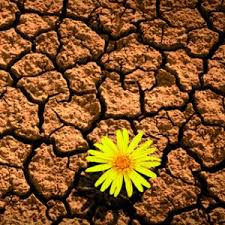Hurricanes, Floods, Earthquakes –
Nuclear Weapons, Famines in Africa
In 5777 we witnessed the stresses and shocks that come with a new reality. What distinguishes today’s threats from those of the past are the escalating rate at which they are occurring, the role of man as antagonist and the growing interconnectedness of our planet.
Yet, our Federal Emergency Management Agency responded skillfully, international aid agencies demonstrated their preparedness, and international diplomacy has continued to keep nuclear war at bay.
Dispute huge economic disruptions, the stock market reached new highs in the second greatest bull market in history, real estate values continued to soar, and the unemployment rate is near historic lows.
Fears of energy shortages will be alleviated by new solar and wind energy technologies. Threats of viruses have been quickly met by the Center for Disease Control.
One might say that this modern world is resilient.
As individuals, we can’t control the next disruption or catastrophe. As they say Man plans and God laughs. However, we can control how we respond to these challenges, how we absorb the shocks of our world, and how quickly we spring back after a blow. In other words, we can control how resilient our institutions, communities, and people are against these disruptions. We must avoid the unmanageable and manage the unavoidable.
I am not certain if Humans are born resilient – but we certainly learn, adapt, and improve upon our resilience. Yet, despite all we know about resilience, there is much more we have to do, share and learn to put in place resilience strategies and, importantly, connect those strategies across sectors to successfully recover from the current and unknowable future risks we face.
Building resilience is not the task of a single actor or a single sector, no matter how innovative or passionate. Rather, building resilience requires us to be more flexible, responsive and robust; to live as individuals and communities who have the core skills required to adapt and cope.
Building resilience is not a luxury — it is a 5778 century imperative. And Judaism has a role to play.
We begin our year with an exploration of resiliency within the Torah reading for Rosh Hashanah. Here we have the story of two women under stressful situations. As we read their stories notice which elements of resilience they exhibit or lack. Remember there is no one person or situation that fits a single definition of resilience. But there are characteristics or traits of resilient people such as these.
Resilient people do not try to control their lives. They surrender to the flow of the wind. They adjust their sails and ride the next wave of their life.
Resilient people often have a moral compass or a set of guiding principles.
Resilient people often have faith bridging the space between promise and fulfillment.
Resilient people often have a sense of humor, which allows them to laugh at themselves.
Resilient people have social supports, community or family upon whom they can rely and in whom they have trust and who give them honest advice.
Resilient people feel a mission calling or a meaning in their life.
Resilient people are aware of their situation, their surroundings and their relationships.
Resilient people have problem solving skills, and take advantage of opportunities.
Resilient people understand that stressful situations don’t define them. They accept that life isn’t perfect.
Resilient people are compassionate and are altruistic, who gain strength from helping others.
Resilient people know when to ask for help when needed.
Resilient people have a sense of gratitude, which frames if not contains their discomfort or frustration.
After the torah and haftorah reading, let’s have a discussion about what traits of resilience appear in the story or are lacking in the characters.
Resilience allows us to redefine our relationship with God.
As we read Torah it seems that Sarah has many of the indicia of resilience. She has faith in God, she has a community upon which she can rely, she is empowered and decisive, and she has a sense of humor.
Hagar is the stranger, the ger. She is without community, without support and without faith. When no one person comes to help her find resilience, it is the Angel of God that helps her to lift up her eyes, to see the well of water. Lifting up her eyes is more than seeing, just as that water is more than merely the sustenance she needs for life. Seeing that well of water gives Hagar the encouragement to also be resilient, to have faith and to move forward. And her son, Ishmael, too will survive and thrive and will be the father of a nation.
May we all have faith in something greater than ourselves, and find the support we need in loving family and friends. May we find the resilience in this coming year to meet whatever challenges life brings to us and to be of support to others in their efforts to confront adversity, hardship and illness.
Rabbi Evan J. Krame




